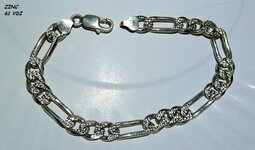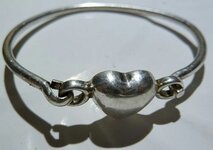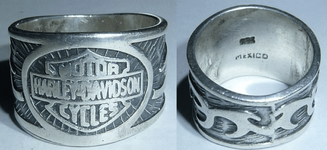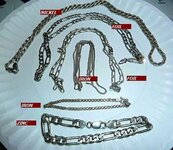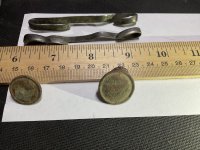Obsessive
Hero Member
- Apr 16, 2017
- 604
- 861
- Detector(s) used
-
XP Deus/MI-6 w/ HF/XF/LF
Tesoro Cibola / Land and Sea pinpointer
- Primary Interest:
- All Treasure Hunting
Some days I think Ive got this thing figured out, some days I don't....
I purchased my Cibola new just a few months ago and, while Ive done several air tests, I'd like to think that each time they become more in depth.
Its not uncommon for me to find screw caps at 6" or 8"'s down. But I do find it interesting that often I'll hit a layer at a similar depth across an area that will consistently give up coins (and trash) from (seemingly) the same decade... all 70's, all 80's, all 90's, etc. Maybe I'm over thinking this, but I swear I'm starting to see a pattern in the layers of earth I'm digging through and think this is telling me about the rejuvenation history of that particular lot. Meanwhile, I hope I'm getting better at this; I keep thumbing that disc knob and making better guesses at whats going to come out of the ground.
The other day I was hanging out with a friend who has a larger selection of old and new gold jewelry than I have available, so I decided to chart my air test results and thought I'd share.
All items were tested with the sensitivity at around 7 and the threshold at about 1 o'clock (a good audible hum while holding the AM button). The only knob changed was the disc setting.
I also experimented with the coins on edge and flat, but those results are not included here. I will say though that I was surprised when the Kennedy Half Dollar while on edge did not register consistently across the coil, if at all. I will likely do more in-depth testing with this on edge vs flat variable in the future.
On this chart green is a good solid signal. Orange is where things break up. Red is no tone.
I'm a bit disconcerted that the lower conductive targets phased out in the Iron zone or below, particularly since most of the areas Ive been hunting are very trashy due to years of fill over fill.
Does changing coils in anyway affect the discrimination capabilities? I'm guessing not, but thought Id ask.
Anyway, here it is... Your feedback is welcome and please let me know if you have any suggestions as to how I may improve on this testing.
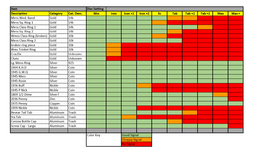
I purchased my Cibola new just a few months ago and, while Ive done several air tests, I'd like to think that each time they become more in depth.
Its not uncommon for me to find screw caps at 6" or 8"'s down. But I do find it interesting that often I'll hit a layer at a similar depth across an area that will consistently give up coins (and trash) from (seemingly) the same decade... all 70's, all 80's, all 90's, etc. Maybe I'm over thinking this, but I swear I'm starting to see a pattern in the layers of earth I'm digging through and think this is telling me about the rejuvenation history of that particular lot. Meanwhile, I hope I'm getting better at this; I keep thumbing that disc knob and making better guesses at whats going to come out of the ground.
The other day I was hanging out with a friend who has a larger selection of old and new gold jewelry than I have available, so I decided to chart my air test results and thought I'd share.
All items were tested with the sensitivity at around 7 and the threshold at about 1 o'clock (a good audible hum while holding the AM button). The only knob changed was the disc setting.
I also experimented with the coins on edge and flat, but those results are not included here. I will say though that I was surprised when the Kennedy Half Dollar while on edge did not register consistently across the coil, if at all. I will likely do more in-depth testing with this on edge vs flat variable in the future.
On this chart green is a good solid signal. Orange is where things break up. Red is no tone.
I'm a bit disconcerted that the lower conductive targets phased out in the Iron zone or below, particularly since most of the areas Ive been hunting are very trashy due to years of fill over fill.
Does changing coils in anyway affect the discrimination capabilities? I'm guessing not, but thought Id ask.
Anyway, here it is... Your feedback is welcome and please let me know if you have any suggestions as to how I may improve on this testing.





